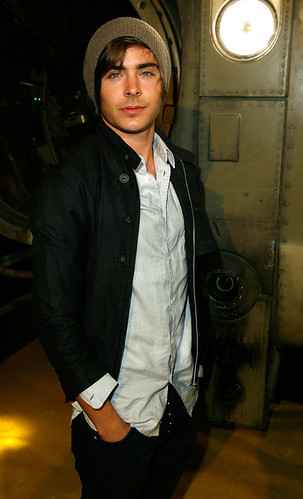
Image : http://www.flickr.com
1952: Long Beach, California. Miss Mexico, Olga Llorens Pérez Castillo, qualified for the semi-finals at the Miss Universe pageant.
1953: Long Beach, California.Miss Mexico, Ana Bertha Lepe Jimenez, was the 3rd runner-up at the Miss Universe. After she became an actress in the Mexican cinematography.
1954:Long Beach, California.Miss Mexico, Elvira Castillo Olvera, did not qualify for the semi-finals at the Miss Universe contest.
1955:Long Beach, California.Miss Mexico, Yolanda Mayen, did not qualify for the semi-finals at the Miss Universe contest.
1956:Long Beach, California. Miss Mexico, Erna Marta Bauman, qualified for the semi-finals at the Miss Universe pageant.
1957:Long Beach,California.Miss Mexico, Irna Arevalo, did not qualify for the semi-finals at the Miss Universe contest.However, she was the 2nd runner-up at the Miss Friendship 1957.
1958: Long Beach,California.Miss Mexico,Elvira Leticia Risser Corredor, did not qualify for the semi-finals at the Miss Universe contest.
1959: Long Beach,California.Miss Mexico,Mirna Garcia Davila, did not qualify for the semi-finals at the Miss Universe contest.
1960:Miami Beach, Florida. Miss Mexico, Lorena Velasquez, did not compete at the Miss Universe pageant.
1961:Miami Beach, Florida. Surprisingly, Mexico did not participate at the Miss Universe contest.
1962:Miami Beach, Florida. For the second time, Mexico did not participate at the Miss Universe pageant.
1963:Miami Beach, Florida. For the third time, Mexico did not send a delegate to Miami Beach.
1964:Miami Beach, Florida. For the fourth time, Mexico did not send a delegate to Miami Beach.
1965:Miami Beach, Florida.Miss Mexico, Juana Acosta Cohen, did not enter the semi-finals at the Miss Universe contest.
1966:Miami Beach, Florida. Mexico did not send a delegate to Miami Beach.
1967:Miami,Florida. Miss Mexico, Valentina Vales Duarte, did not enter the semi-finals at the Miss Universe pageant.
1968:Miami Beach. Miss Mexico,Perla Olivia Aguirre Muñoz, did not enter the semi-finals at the Miss Universe pageant.
1969:Miami Beach, Florida. Miss Mexico, Gloria Leticia Hernandez Martin del Campo, did not enter the semi-finals at the Miss Universe contest.
1970:Miami Beach, Florida.Miss Mexico, Libia Zulma Lopez Montemayor, did not qualify for the semi-finals at the Miss Universe.
1970-2007 Mexico has had several judges in the Miss Universe history:1970 and 1971 (actor Julio Aleman), 1978 (actor Mario Moreno),1991(actor Jorge Rivero), 1984 (actress Lucia Mendez), 1988 (actor Fernando Allende), 1989 (singer Emmanuel), 1993 (painter Jose Luis Cuevas and former Miss Universe Lupita Jones), 1995 (actress and singer Lucero), 2004 (supermodel Elsa Benitez), 2005 (actor Mario Cimarro), and 2007 (actor Mauricio Islas).
1971:Miami Beach, Florida. Miss Mexico, Maria Luisa Lopez Corzo, did not enter the semi-finals at the Miss Universe contest. However,she was crowned Miss Best National Costume.
1972: Dorado, Puerto Rico. Miss Mexico, Maria del Carmen Orozco Quibriera, did not qualify for the semi-finals at the Miss Universe.
1973: Athens, Greece. Miss Mexico, Roxana Villares Moreno, did not enter the semi-finals at the Miss Universe pageant.
1974: Manila, Philippines. Miss Mexico, Guadalupe del Carmen Elorriaga Valdez, did not qualify for the semi-finals at the Miss Universe.
1975: San Salvador, El Salvador. Miss Mexico, Delia Servin Nieto, did not qualify for the semi-finals at the Miss Universe contest. However, she was the 2nd runner-up at the Miss Best National Costume 1975.
1976: Victory City,Hong Kong. Miss Mexico, Carla Jean Evert Reguera, did not qualify for the semi-finals at the Miss Universe contest.
1977: Elizabeth Gonzalez, first favorite by journalists, finished second place at the Señorita Mexico. In Santo Domingo, hosted the Miss Universe 1977, Bob Barker, American host, announced the next Miss Universe in Acapulco (Mexico). Like Ambassador of Miss Universe 1978, Mario Arturo Moreno Ivanova, best known as "Cantinflas", went to Santo Domingo, the capital city of the Dominican Republic.
1978: Acapulco (Mexico) hosted the Miss Universe pageant. Martha Eugenia Ortiz, first favorite by journalists, finished second place at the Señorita Mexico. Miss Merida and Miss Mexico, Alba Margarita Cervera Lavat, qualified for the semifinals at the Miss Universe.
1979: Perth, Australia. Miss Mexico, Blanca Maria Luisa Diaz Tejada, did not qualify for the semi-finals.However, she looked like the best music disco dancer.She loved songs by Donna Summer, John Travolta, Jesse Green and Diana Ross.
1980:Seoul,South Korea. Miss Mexico, Ana Patricia Nuñez Romero, did not enter the semi-finals at the Miss Universe.
1981: New York City,USA. Miss Mexico, Judith Grace Gonzalez Hinks, did not enter the semi-finals at the Miss Universe.
1982: Lima, Peru. Miss Mexico, Maria del Carmen Lopez Flores, did not enter the semi-finals at the Miss Universe.
1983:St.Louis, Missouri,USA. Miss Mexico, Monica Maria Rosas Torres, did not qualify for the semi-finals at the Miss Universe contest.
1984: Miami Beach, Florida. Miss Mexico, Elizabeth Broden Ibañez, did not qualify for the semi-finals at the Miss Universe contest.
1985: Miami Beach, Florida. Miss Mexico,Yolanda de la Cruz Cardenas Aviles, did not qualify for the semi-finals at the Miss Universe contest.
1986:Panama City, Panama. Miss Mexico,Alejandrina Carranza Ancheta, did not enter the semi-finals at the Miss Universe.
1987:Singapoore City, Singapoore.Miss Mexico, Cynthia Fallon Garcia Cepeda, did not enter the semi-finals at the Miss Universe.
1988: Taipei (Taiwan). Miss Mexico, Amanda Olivares, was the 2nd runner-up at the Miss Universe.
1989: Cancun (Mexico) hosted the Miss Universe Pageant. Miss Mexico, Adriana Abascal, was the 4th runner-up.
1990: Los Angeles, California. Miss Mexico, Marile del Rosario Santiago, qualified for the semi-finals at the Miss Universe.
1991:Las Vegas, Nevada,USA. Miss Mexico, Lupita Jones, was elected Miss Universe. After, Miss Universe 1991 was acclaimed in Mexico City as a national heroine.
1992: Bangkok,Thailand. Miss Mexico, Monica Zuñiga Arriaga, did not qualify for the semi-finals at the Miss Universe pageant.
1993: Mexico City, Mexico. Miss Mexico, Angelina Gonzalez,did not qualify for the semi-finals at the Miss Universe pageant.
1994: Manila, Philippines. Miss Mexico, Fabiola Perez Rovirosa, did not qualify for the semi-finals at the Miss Universe pageant.
1995: Windhoek, Namibia. Miss Mexico, Luz Maria Zetina Lugo, did not qualify for the semi-finals at the Miss Universe pageant.
1996:Las Vegas, Nevada. Miss Mexico, Vanessa Guzman, qualified for the semifinals. Her idol was Indira Gandhi, who was Prime Minister of India.
1997:Miami Beach, Florida.Miss Mexico, Rebeca Lynn Tamez Jones, did not qualify for the semi-finals at the Miss Universe pageant.
1998:Honolulu, Hawaii. Miss Mexico, Kathy Fuentes Garcia, did not qualify for the semi-finals at the Miss Universe pageant. She won the Clairol Essence Best Style Award.
1999:Chaguaramas, Trinidad & Tobago. Miss Mexico, Silvia Salgado, qualified for the semi-finals at the Miss Universe pageant.
2000: Nicosia, Cyprus. Miss Mexico, Leticia Judith Muray Acevedo, did not qualify for the semi-finals at the Miss Universe pageant. However,she was crowned Miss Best National Costume.
2001:Bayamon, Puerto Rico. Miss Mexico, Jacqueline Bracamontes Van-Hoorde, did not qualify for the semi-finals at the Miss Universe pageant.
2002: San Juan de Puerto Rico. Miss Mexico, Erika Yadira Cruz Escalante, did not qualify for the semi-finals at the Miss Universe pageant.
2003: Panama City, Panama. Miss Mexico, Marisol Gonzalez Casas, did not qualify for the semi-finals at the Miss Universe pageant.
2004: Quito, Ecuador. Miss Mexico, Rosalva Luna, qualified for the semi-finals at the Miss Universe.
2005: Bangkok, Thailand. Miss Mexico, Laura Elizondo Erhrad, was the 3rd runner-up at the Miss Universe. She was one of the favorites to win in the final.
2006:Los Angeles, California : Miss Mexico, Priscila Perales Elizondo, qualified for the semi-finals at the Miss Universe.Miss Mexico 2006 was one of the favorites to win in the final.
2007: Miss Universe in Mexico City. Miss Mexico, Rosa Maria Ojeda Cuen, qualified for the semi-finals at the Miss Universe contest.













